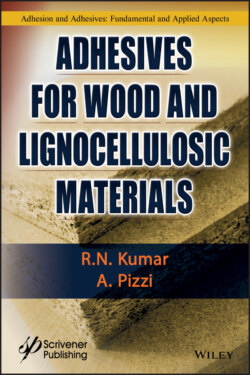Читать книгу Adhesives for Wood and Lignocellulosic Materials - R. N. Kumar - Страница 13
Chapter 1 Wood as a Unique Adherend 1.1 Introduction
ОглавлениеIn order to make durable wood adhesive bonds in composite wood products, a clear understanding of the nature and uniqueness of wood as a substrate and of the distinctiveness of the wood–adhesive interaction is essential. In this context, it is necessary to mention that substantial differences exist between bonding in the case of wood on the one hand and most other materials on the other. The most obvious characteristics of wood that distinguish wood from other substrates are (a) its porosity, (b) presence of interconnected cells into which adhesive can flow, and (c) the cell walls that have the ability to allow low-molecular-weight chemicals and resins to pass through and in some cases even to react with them. All the above features are due to the special identity that wood possesses in contrast to other substrates.
It is known that wood exhibits multiscale hierarchical structures. As reported by Gao [1], structural hierarchy is a rule of nature and can be observed in many other natural and man-made materials. In recent years, these materials have been called multiscale materials. Hierarchical solids contain structural elements that themselves have further finer structures [2]. In this respect, wood as an adherend is significantly different from other adherends such as metals and plastics.
